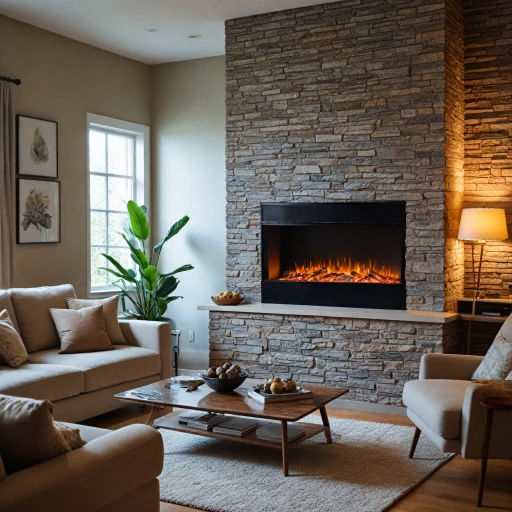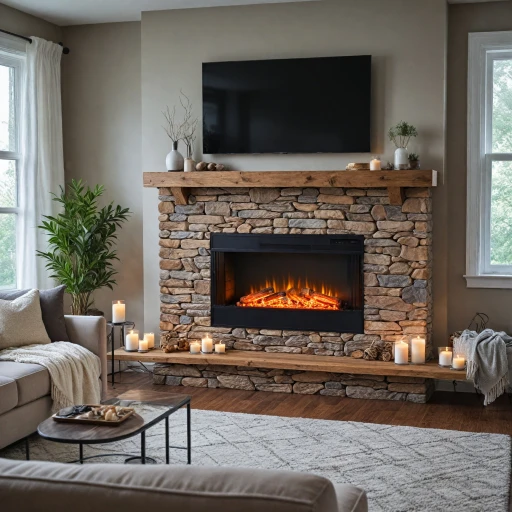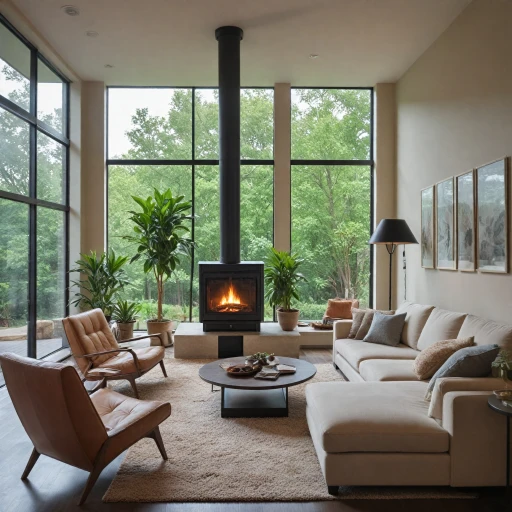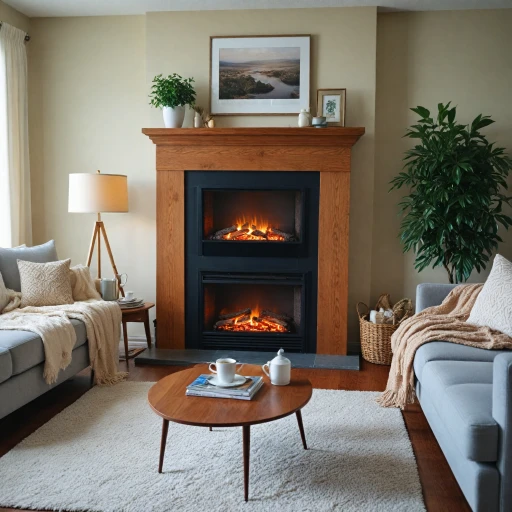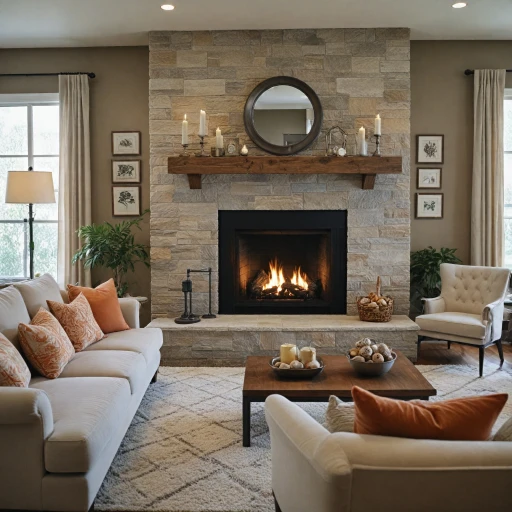Understanding the Shift: Why Consider an Electric Fireplace?
Rethinking Your Fireplace with Modern Conveniences
As temperatures drop, the cozy allure of a warm fireplace becomes undeniable. But with traditional wood-burning fireplaces presenting challenges like maintenance and pollution, many homeowners are eyeing modern alternatives. Electric fireplaces emerge as a compelling choice, blending convenience with safety.
Imagine ending a busy day by relaxing in front of a flickering electric fireplace. This innovative and stylish option offers the warmth and aesthetic appeal without the hassle of gathering logs or cleaning up soot. Plus, there’s no risk of carbon monoxide, a concern with gas fireplaces.
Transitioning to an electric unit means fewer worries about the intricacies of gas connections or the complexities of chimney maintenance. Instead, installation is straightforward, involving an electric outlet and minimal effort, making them increasingly popular among families prioritizing safety and efficiency.
Moreover, with the advent of energy-efficient technologies, these units not only offer warmth but also lower heating costs, a boon for those looking to budget effectively. As electric fireplaces become mainstream, they cater to various needs, including space-saving inserts and built-in models tailored to both aesthetics and practicality.
Cost Comparison: Electric vs. Gas Fireplaces
Budgeting for Flames: Electric vs. Gas
Choosing between electric and gas fireplaces can hinge quite a bit on cost. If you’re making a cost-savvy decision, knowing your numbers is key. Electric fireplaces generally present a more affordable upfront option. Their inserts are user-friendly, requiring neither venting nor a chimney, which means kissing goodbye to hefty installation costs. Unlike gas fireplaces, electric units don’t require a dedicated gas line, keeping operational costs in check. Gas fireplaces run off natural gas or propane. While they deliver authentic warmth with real flames, their initial installation can be pricey. Beyond the fireplace unit itself, the cost encompasses necessary chimney modifications and gas line setup. Electric fireplaces shine with lower maintenance costs, too. Forget chimney sweeping, mineral deposits, and gas leak concerns. Compared to wood-burning fireplaces, the electric insert proves even more low-key, eliminating ash cleanup and log fuss.The Running Costs Equation
Operational expenses differ between these fireplaces. Electric units are energy efficient, utilizing LED technology to mimic flames, using little electricity. They can be a modest bump on your power bill but won’t singe your budget. Gas fireplaces might have a higher monthly expense since natural gas costs can vary, especially during colder months when heat demand spikes. When balancing comfort and expense, electric options might stand out. They typically use about 1500 watts of electricity per hour, translating to about 18 cents per hour based on average electricity rates. Gas can be around 20 to 30 cents per hour, depending on local gas prices. Consider these elements while you explore the world of electric chimneys, as these factors might cast the deciding vote on which fireplace fits your hearth and heart best.Installation Process: What to Expect
What Installing Your Electric Fireplace Involves
Switching from gas to electric fireplaces brings a blend of practicality and modern convenience. But what exactly does the installation process entail, and how does it stack up against its traditional gas counterpart? Here’s a breakdown to ease your transition.
First off, one of the delights of opting for an electric fireplace is the simplified installation process. Unlike gas or wood-burning fireplaces, many electric units offer a straightforward plug-and-play solution. For wall-mounted or insert varieties, expect a bit more hands-on approach. This may involve mounting brackets or fitting the insert into your existing fireplace space. Usually, this doesn't require extensive structural changes or venting installations, significantly trimming down your overall costs and stress levels.
The choice of location is crucial. Opt for a wall where there's easy access to an electrical outlet. For built-in options, hiring a professional might be wise, ensuring the aesthetics and electrical needs are perfectly matched without compromising safety.
Speaking of safety, electric fireplaces stand out. They don't produce open flames or release harmful emissions like carbon monoxide, a significant plus compared to their gas and wood-burning peers. Plus, with the right placement, potential risks are minimized, keeping the heat exactly where you need it and nowhere you don't.
What’s more, maintaining these electric wonders is a breath of fresh air – almost effortless! Gone are the days of chimney sweeping or gas line checks. Electric models require minimal upkeep, saving you time and future maintenance costs.
In the grand picture, the installation of an electric fireplace is a relatively quick and cost-effective process that blends seamless design with modern functionality. Choose the unit that matches your aesthetic and functional needs, and relish in the cozy vibes it offers without the traditional hassle.
Energy Efficiency and Environmental Impact
Eco-Friendly Heating with Modern Electric Fireplaces
Switching from a gas fireplace to an electric option offers an impressive step toward energy efficiency and a healthier environment. Electric fireplaces shine with their cleaner heating technology by eliminating the emissions associated with traditional fireplaces. Gas fireplaces, while effective at providing warmth, often come with the baggage of burning natural gas, releasing carbon monoxide and other pollutants. When you choose electric fireplaces, they produce no emissions at all. This not only ensures your living space remains free from harmful gases but also significantly reduces your carbon footprint. Electric models, like fireplace inserts or built-in units, leverage efficient electricity consumption. This precision in heating means you're not wasting energy endlessly. More often than not, electric fireplaces are considered more energy efficient compared to their gas counterparts. You can heat specific areas without the loss associated with traditional gas models. Moreover, electric fireplaces come with options that further enhance energy efficiency. Many designs include programmable timers and thermostats, enabling you to control and optimize heating as per your needs. Some units even provide heating without the actual flame effect, further economizing your energy use. In terms of cost, electric units often allow for savings in the long run, given the rising prices of natural gas and wood. Opt for an energy-efficient electric insert if cutting back on utility costs is your target while aiming for a warmer ambiance. Overall, transitioning to an electric fireplace is a strong move towards an eco-conscious lifestyle, blending modern heating techniques with the need for sustainable living.Design and Aesthetic Options
Appealing Designs for Every Taste
Transitioning from a gas to an electric fireplace opens up a world of design possibilities. These fireplaces offer endless style and placement options that can seamlessly fit into any home setting or aesthetic. Whether you're inspired by a modern, sleek look or a classic, cozy vibe, there's an electric fireplace unit for you.One of the greatest benefits of electric fireplaces is their versatility. They come in a variety of styles, including wall-mounted, freestanding, and inserts, allowing you to choose the configuration that best suits your needs and spatial considerations. Electric fireplace inserts are especially popular for those upgrading from wood burning or converting gas fireplaces to electric, as they easily slip into existing spaces, blending tradition with innovation.
Customization and Realism in Electric Logs
The level of customization available in electric fireplaces today is truly impressive. Many units include adjustable settings for flame color, brightness, and speed, giving homeowners the ability to tailor the look of their fireplace. This not only adds to the ambiance of a room but can also drastically change the overall feel of the space.
Authenticity is another hallmark of today's electric fireplaces. Improved technologies have led to the creation of incredibly realistic log sets and ember beds. These features enhance the experience, offering the comforting sight of a traditional fireplace without the use of natural gas or the concerns surrounding carbon monoxide emissions.
Space-Saving and Built-In Options
For those dealing with limited space, a built-in electric fireplace can be a perfect solution. Opt for units that fit into walls or existing furniture, creating a cozy nook without sacrificing valuable living space. Plus, many of today's designs offer heating options that can efficiently warm your home, eliminating the need for additional heating sources.
Overall, electric fireplaces are not only an economical option over their gas counterparts but also a stylish and efficient choice that meets modern demands for safety and convenience. As preferences shift, homeowners will find that electric fireplaces bring the warmth and coziness they desire with minimal maintenance and ample customization options.
Maintenance and Longevity
Keeping Your Electric Fireplace in Top Shape
Maintaining an electric fireplace is a breeze compared to its gas or wood-burning counterparts. These units pivot focus from the exhausting routine of fuel changes and chimney sweeps, offering a more straightforward approach to enjoy the cozy warmth they provide.- Minimal Cleaning Required: Unlike wood or gas options that require constant cleaning to manage soot and ash, electric fireplaces need only occasional dusting. Wiping down the electric insert or the glass front can keep it looking sharp.
- Check Connections: Regularly check the plug and the cord to ensure they are secure and free from damage. Any issues here could affect the performance or safety of the unit.
- LED Bulb Replacement: Most electric fireplaces come with LED lights to mimic realistic flame effects. These bulbs have a long lifespan but should be replaced as soon as they start to dim to keep the illusion alive.
- Longevity and Durability: Electric fireplaces generally lack moving parts like burners or fans found in gas models, which translates to fewer wear-and-tear issues over the years. Plus, no venting means less room for surprises.


